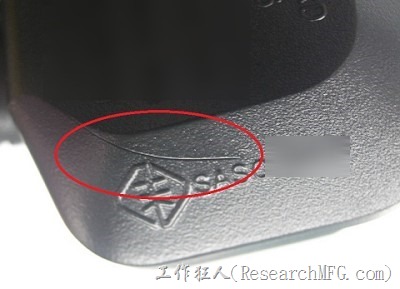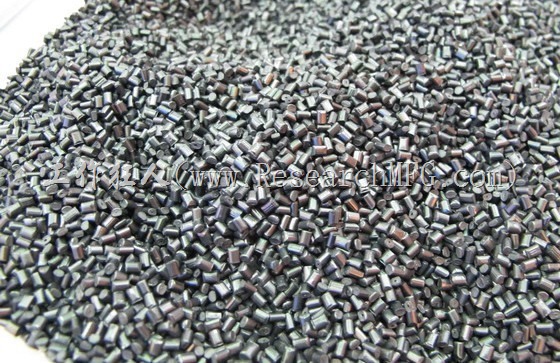
In a previous discussion, WorkingBear identified potential root causes for screw boss cracking after mold-in screw nut insertion. Following a complaint from the field, we asked EMS and the plastic injection supplier to double-check their inventory and found that approximately 1% of the plastic case had cracked on the screw bosses due to inner stress during the mold-in screw nut insert process, without any additional force or screwdriver. However, the defect rate increased to 30% after the screws were fastened into the plastic case.
So, what make the crack happened? Workingbear had pointed out 4 potential root causes to bring the screw boss crack for the mold-in nut screw insert process.
- Using too much of the re-grind resin
- No pre-heat on the screw Insert parts
- The improper molding parameter
- Design risk
After confirming that the screw boss cracking was caused by the plastic parts themselves, we held these poor quality plastic parts and questioned the plastic injection supplier about why the cracking occurred. Interestingly, the plastic supplier challenged us back, stating that they did not change any injection parameters for these plastic parts, and they do not know why the screw boss cracking is happening.
This experience has led Workingbear to believe that we are dealing with a very poor plastic injection supplier. I am considering taking matters into my own hands and closing this supplier in the future.
This supplier is particularly interesting because they not only produce the plastic parts but also provide box build assembly and packing services to customers. They perform box build assembly manually, even using manual screwdrivers to screw the top and bottom case together in the production line. Moreover, this supplier was responsible for building the original product. We moved the product out of this supplier two years ago but kept the plastic parts there because many EMS companies do not accept small quantity orders, and that why this supplier can still survive.
It is evident that this supplier has an attitude problem and lacks an engineering and technology background. Their engineers only know how to build parts and products, but not why they should do things that way. Their management is also unwilling to confront problems and is keen on avoiding any trouble as soon as possible.
1. Supplier said they usually do the same way without any crack happened in the past but now happen in other EMS factory?
The supplier claimed that they typically applied a torque of 1.5kgf-cm using a manual screwdriver to secure these Philips M2 machine screws between the top and bottom case. They also challenged the notion that the crack may have been caused by another EMS applying a torque of 2.0~3.0Kgf-cm using a semi-automatic screwdriver. However, Workingbear points out that a good parts even applying a larger screw torque till screw stripped rather than cracking the plastic boss.
I must say that this supplier is lucky not to have received any complaints in the past. However, as time passes, this crack will gradually become more serious. It does not mean that no cracks were found in their original products, but the cracks did not break through to the outside of plastic case.
2. Why needs to do pre-heat the INSERT nut since the plastic injection process tooling will be pre-heated to around 110°C already?
Almost of the INSERT parts are made by cooper material and its coefficient of thermal expansion (CTE) is 16.4 µm/m-°C while stay at 20°C~100°C environmental. The plastic resin is PC and its CTE is 66.6 µm/m-°C while stay at -40°C~+40°C. This creates a CTE difference of approximately 4 times between the two materials.
Of course, the injection machine can pre-heat the tooling and INSERT nut parts. It is challenging to ensure that the INSERT parts are heated to their desired temperature. Since the only contact between the plastic tooling and INSERT parts is the bolt, there is no guarantee that the pre-heating process will heat the INSERT parts to the right temperature in a short amount of time.
As the high temperature melted resin flows into the tooling cavity, it increases the temperature and size of the INSERT parts. As the resin solidifies and cools down, it shrinks in size while the INSERT parts may still be at a high temperature. This results in a difference in expansion rate between the two materials, leading to inner stress at the interface of the resin and INSERT parts. If the plastic strength is weaker than the inner stress, the weak point may crack or break.
To prevent this from happening, the INSERT parts should be pre-heated to 50°C~60°C and kept at that temperature for at least 10 minutes before being placed into the tooling. This allows the INSERT parts to reach their stable expansion size before the molding process. Pre-heating to 60°C is for safety purposes to prevent the operator from getting burned.
In general, larger screw boss diameters increase the risk of screw boss cracking during the mold-in process. This is because the dimensions of the resin shrink during the cooling stage, causing both the outer and inner diameters to shrink simultaneously. However, the INSERT nut will only shrink slightly and must withstand the stress caused by the resin shrinkage. The greater the diameter of the screw boss, the greater the shrinkage dimension, and if the plastic strength is weaker than the inner stress, then cracking or breakage may occur at the weak point.
So, WorkingBear took below actions to fix this screw boss crack issue
1. Ask plastic supplier to do pre-heating for the INSERT nut at 60°C temperature and keep 10 minutes at least then put it into the injection molding tool.
Actually, the problem was fixed and no crack show after this action. I did use 8Kgf-cm semi-auto screw driver to lock the screw into the INSERT nut for test and didn’t find any crack. I tracked it after one day, one week, two weeks, one month.
Thanks god the crack be fixed. That means there really something wrong in plastic supplier side but I can’t and hard to prove it. I personal think supplier shall remove the re-grind resin adding too and just won’t tell me the truth.
2. Do tooling modification for the mold-in screw boss to reduce its diameter from 7.16mm to 5.25mm.
My original case show the outer boss diameter is 7.16mm and INSERT nut has outer diameter of 2.38mm. The boss diameter is 7.16/2.38=3.0 times the insert diameter. I was thinking the proposal of 1.5 times from design guideline is really small and would like to do the tool modification step by step gradually and not reduce it to 1.5 times at one time. So I reduce the diameter from 7.16mm to 5.25mm (there still have 5.25/2.38=2.2 times and considering the draft angle) and added 0.3mm radius on all core side corner and remove the pre-heating requirement for these INSERT nut process.
Now 2 years had been passed at least and I never heard any screw boss crack issue for this case.
PS: One year later that I asked to move this molding tool out this supplier. I would like to end the nightmare with this supplier.
Related articles:









Leave a Reply